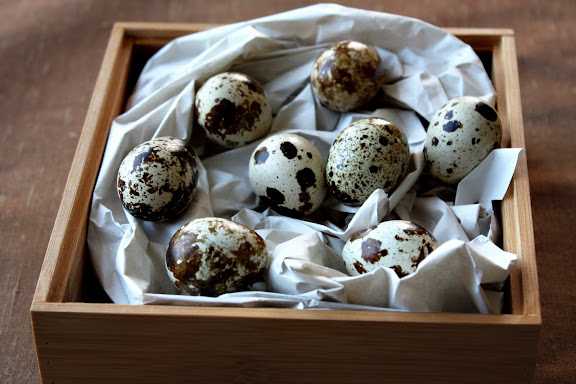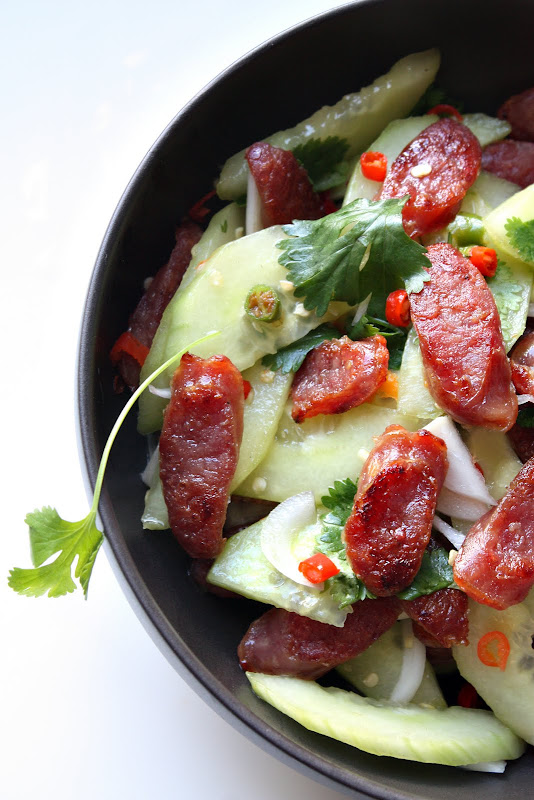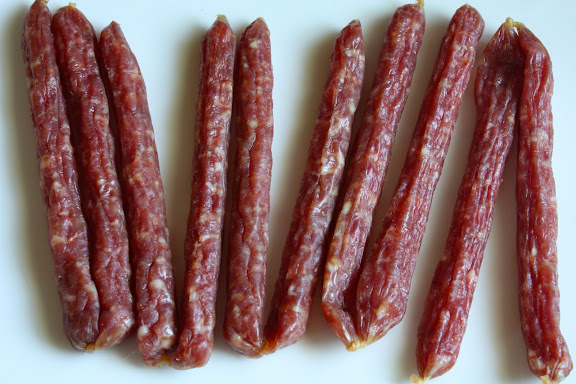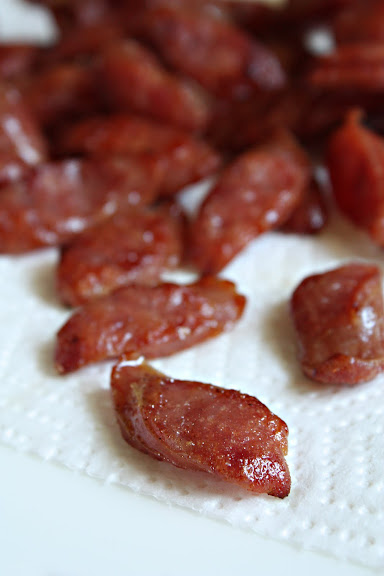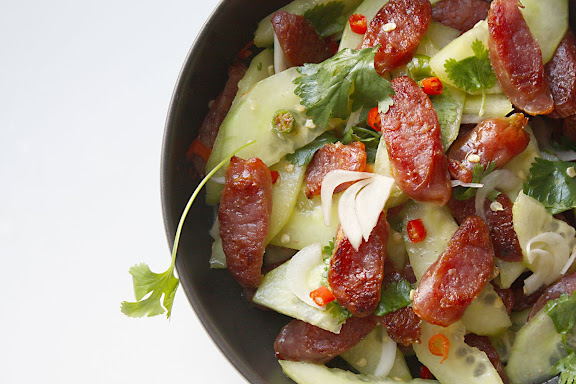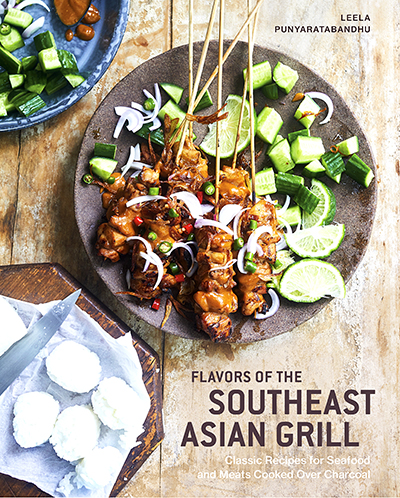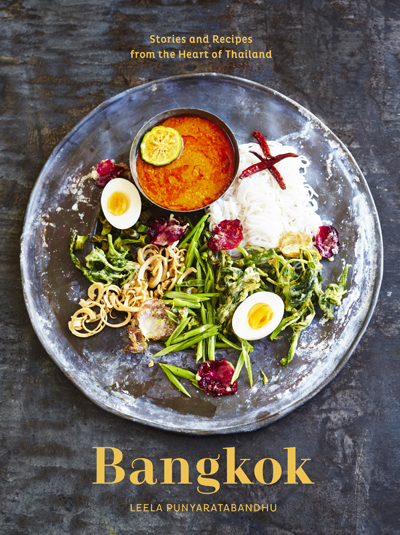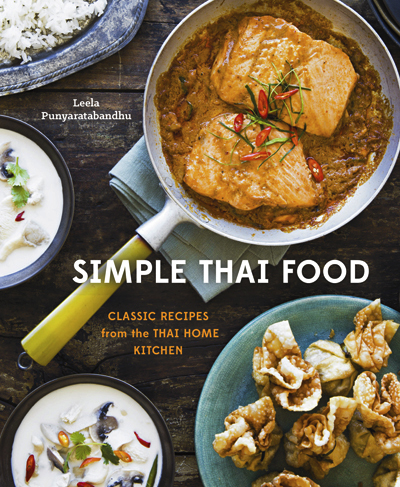
It seems to me that the food scenes in Thailand have in the last few years eased off of the east-west fusion trend. Panaeng curry pizzas are now the thing of the past. The somewhat new trend is to reinvent the old-fashioned, classic dishes. Som Tam(ส้มตำ), the beloved salad featuring crunchy green papaya strands, has been given numerous innovative makeovers. Vegetable tempura Som Tam. Som Tam with salted duck eggs. Som Tam with steamed roe crabs. The list goes on and my head hurts.
Just when I thought I couldn’t keep up with all the Som Tam variations, when I visited my beautiful cousin in Ayutthaya last summer, she regaled me with this most unusual version of Som Tam, made with fresh cabbage and raw shrimp. I have seen many versions thus far, yet I’m sure I haven’t seen even half of what’s available out there. Apparently, the modus operandi behind this is: if you can fit it into a krok, you can make Som Tam with it.

One of the many new versions of Som Tam wherein various seasonal fresh fruits are used in lieu of green papaya is among some of the most popular reincarnations out there. And it’s for a very good reason too. Fresh tropical fruits are inexpensive, plentiful, and available all year round. It would be a shame not to take advantage of them. Besides, Som Tam Phonlamai (ส้มตำผลไม้) makes perfect sense. After all, the original version with green papaya as the main star is also a fruit salad even though the Thai mind regards green papaya as more of a vegetable than a fruit.
Regardless of the variations, the basic procedure of Som Tam is the same, i.e. some garlic and fresh chillies are pounded together in a mortar and pestle, then thin strands of green papaya, pieces of long beans, and fresh tomatoes go in, and the whole thing get seasoned with fish sauce, palm sugar, and lime juice. That’s the bare-bones version. Sometimes, pickled crabs are added to it. Sometimes, roasted peanuts and dried shrimp. Sometimes, all of the above. Basically, Som (a dialectal word meaning “sour” or “tart”) Tam (“to pound” or “to be pounded”) is all about fresh vegetables lightly-bruised and seasoned in a wood or terra cotta mortar. (Make Som Tam in a granite mortar in the presence of a Thai person and s/he would most likely have a hard time holding in a laugh.)

With the standard procedure and the list of essential ingredients in mind, this Thai fruit salad, Som Tam-style, should be a cake walk for everybody. The key is to use fresh fruits with firm and crunchy texture. Your choice of fruits should have flavors that lend themselves well to a sour-salty-sweet salad such as this. Anything soft, watery, gooey, pasty, or sticky does not make a good candidate. (Durian or mangosteen, for example, shouldn’t be part of the mix. Nor should bananas or ripe mangoes.) Some crunchy, mild-flavored vegetables can also be used. Grated zucchini, carrots, or chayote squash come to mind. I’ve also had used under-ripe avocados in the past with great success.

Since living in Chicago means I don’t have access to some tropical fruits which would be perfect for this salad, I made do with what I’ve got: a Granny Smith apple and a Fuji apple cut into thin slices, honeydew melon balls, some big dice of cantaloupe and pineapple, grated green mangoes, and some clementine sections. I also threw some vegetables into the mix: a jicama cut into matchsticks, a carrot grated thinly, some halved cherry tomatoes (let’s just agree for convenience’ sake that they’re vegetables in this case) and radishes. (Some sugar snap peas would have been perfect in this, but I didn’t have them on hand at the time.) Use what you like. Mix up flavors and textures. Cutting the fruits into various shapes also makes the finished dish even more interesting to look at and eat.
All you have to do is follow the procedure laid out in my post on Thai papaya salad, replacing the shredded green papaya with a mélange of fresh fruits cut into bite-size pieces. For this fruit Som Tam, I usually leave out the long beans. But that’s a personal preference.

Be sure to serve the salad immediately. It does not keep.
Notes:
- Cut up the fruits that are most susceptible to oxidation, e.g. apples and pears, last.
- To make this salad vegan, use salt instead of fish sauce. Leave out the dried shrimp.
- To make this salad vegan and raw, omit the shrimp, use sea salt in place of fish sauce, replace the sugar with raw agave nectar, and use chopped raw almonds instead of roasted peanuts.









